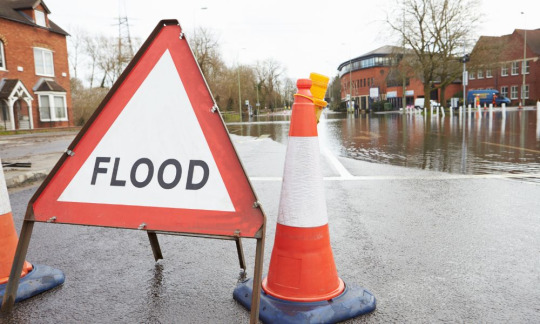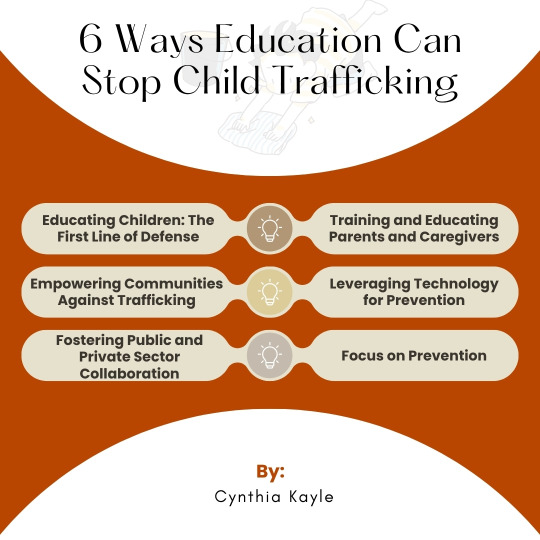#CommunityProtection
Explore tagged Tumblr posts
Text
Cynthia Kayle Shares Key Strategies for Effective Threat Mitigation

Introduction
Threat mitigation is an essential aspect of any organization’s security strategy. While the identification of emerging threats is crucial, organizations must also develop robust mitigation strategies to prevent potential risks from escalating into major incidents. Effective threat mitigation requires a comprehensive approach, blending proactive measures, real-time response, and long-term security strategies to reduce vulnerabilities across all operational areas.
This article explores key strategies for effective threat mitigation, offering actionable steps for organizations to safeguard their operations, personnel, and reputation from potential harm.
1. Establish a Risk Management Framework
A strong risk management framework serves as the foundation for identifying, analyzing, and mitigating risks in an organized and structured manner. This framework should integrate security, compliance, and operational requirements, ensuring that all potential threats are addressed at the organizational level.
Actionable Steps:
Create a Risk Management Team: Assemble a dedicated team to assess, identify, and respond to risks across the organization. This team should include experts from security, IT, legal, and compliance.
Develop a Risk Register: Maintain a comprehensive risk register that tracks all identified threats, their potential impact, likelihood, and mitigation strategies. This register should be continuously updated as new risks emerge.
Prioritize Risks Based on Impact: Use risk assessment tools to evaluate the severity of each risk and prioritize mitigation efforts accordingly. Focus on threats with the highest potential impact on business continuity.
Reference:
Full URL: https://www.iso.org/iso-31000-risk-management.html
2. Implement Security Best Practices and Policies
Establishing security policies and best practices helps to create a standardized approach to threat mitigation. These policies should cover everything from data protection to physical security, and should be enforced across the organization to ensure consistency.
Actionable Steps:
Develop Comprehensive Security Policies: Draft detailed security policies covering access controls, incident response, cybersecurity, and physical security. Ensure these policies are aligned with industry standards and regulatory requirements.
Enforce Compliance: Regularly conduct audits to ensure that policies are being followed. Implement training programs for employees to keep them informed about security policies and their role in risk mitigation.
Review and Update Policies: Conduct regular reviews of security policies to account for new threats, emerging technologies, and regulatory changes. Update policies as necessary to stay ahead of evolving risks.
Reference:
Full URL: https://www.nist.gov/cyberframework
3. Leverage Technology for Threat Detection and Response
Technology plays a crucial role in identifying and mitigating threats quickly and efficiently. From advanced monitoring systems to AI-driven analytics, technology can significantly improve the effectiveness of your threat mitigation strategies.
Actionable Steps:
Invest in Threat Detection Tools: Use advanced tools like intrusion detection systems (IDS), endpoint detection and response (EDR), and firewalls to monitor your network in real-time and detect potential threats as they arise.
Leverage Artificial Intelligence (AI): Implement AI-powered tools such as Darktrace or Vectra AI that can automatically detect anomalous behavior and mitigate threats before they escalate.
Deploy Automated Response Systems: Set up automated incident response systems that can take immediate action when a threat is detected, such as isolating infected systems, blocking suspicious IP addresses, or initiating alerts.
Reference:
Full URL: https://www.darktrace.com
Full URL: https://www.vectra.ai
4. Foster a Culture of Security Awareness
Emerging threats often stem from human error or lack of awareness within the organization. To mitigate this, building a security-aware culture is crucial. Employees must be educated on recognizing suspicious activity and adhering to security protocols.
Actionable Steps:
Conduct Regular Security Training: Provide ongoing training sessions for employees, covering topics such as phishing prevention, data protection, and password security.
Simulate Real-Life Scenarios: Run security awareness drills to simulate common attack scenarios like phishing emails or data breaches. This will help employees recognize and respond to threats effectively.
Encourage Reporting: Create a clear process for employees to report suspicious activity or potential security breaches. Ensure that they feel empowered to speak up without fear of repercussions.
Reference:
Full URL: https://www.sans.org/cyber-security-skills-training/
5. Establish Incident Response and Recovery Plans
A well-defined incident response plan (IRP) is crucial for quickly addressing and mitigating the impact of a security breach or attack. Equally important is having a recovery plan to restore operations and minimize downtime.
Actionable Steps:
Develop an Incident Response Plan (IRP): Outline clear steps for responding to various types of security incidents, including data breaches, malware infections, and physical security threats. Include protocols for containment, investigation, and recovery.
Test and Update the IRP Regularly: Conduct regular simulations and tabletop exercises to test the effectiveness of the IRP. Update the plan as necessary to account for new threats and organizational changes.
Create a Business Continuity Plan (BCP): Develop a business continuity plan that includes disaster recovery procedures and ensures the organization can continue operating in the event of a major security incident.
Reference:
Full URL: https://csrc.nist.gov/publications/detail/sp/800-61/rev-2/final
Conclusion
Effective threat mitigation requires a holistic approach that integrates risk management, advanced technology, employee awareness, and well-defined response plans. By employing these strategies, organizations can proactively address threats, reducing the potential for damage and ensuring business continuity in the face of security challenges.
Adopting these measures will enhance your organization's ability to not only identify emerging threats but also effectively mitigate them before they escalate into larger problems.
References:
Full URL: https://www.iso.org/iso-31000-risk-management.html
Full URL: https://www.nist.gov/cyberframework
Full URL: https://www.darktrace.com
Full URL: https://www.vectra.ai
Full URL: https://www.sans.org/cyber-security-skills-training/
Full URL: https://csrc.nist.gov/publications/detail/sp/800-61/rev-2/final
#cynthia kayle#RiskMitigation#SecurityExpert#ThreatManagement#CommunityProtection#CrisisManagement#StrategicSecurity#SafetyPrograms#IntelligenceDriven#SecurityConsulting
1 note
·
View note
Text
An open letter to the U.S. Congress
Pass the Preventing Private Paramilitary Activity Act (S.3589/H.R.6981)!
817 so far! Help us get to 1,000 signers!
All fifty states currently prohibit people who are armed and acting as part of a private military organization like the Proud Boys and the Oath Keepers from actions like intimidating state and local officials, interfering with government proceedings, pretending to be law enforcement, and infringing on the constitutional rights of their fellow citizens. Unfortunately these bans are often outdated, under-enforced or ignored – and fail to account for public safety threats with national agendas and national activities. Marking the third anniversary of the coup attempt on January 6th, Senator Ed Markey and Rep. Jamie Raskin have proposed the Preventing Private Paramilitary Activity Act (S.3589/H.R.6981) to address this gap in the law and add a federal prohibition on paramilitary conduct with civil and criminal penalties. With threats of such activity escalating greatly, I’d like you to support this legislation and push for it to be passed quickly. Please let me know in writing that you will. Thanks!
▶ Created on March 5 by Jess Craven
📱 Text SIGN PBNOWW to 50409
🤯 Liked it? Text FOLLOW JESSCRAVEN101 to 50409
#JESSCRAVEN101#PBNOWW#resistbot#petition#OpenLetter#USCongress#ParamilitaryActivity#Prevention#Legislation#PublicSafety#CivilRights#CriminalJustice#LawEnforcement#PolicyAction#NationalSecurity#CommunitySafety#GovernmentResponse#Accountability#PoliticalActivism#CivicEngagement#LegalReform#Advocacy#PolicyChange#PublicConcern#SecurityMeasures#CommunityProtection#PolicyDevelopment#NationalAgenda#SafetyStandards#GovernmentAccountability
1 note
·
View note
Text

Protecting Birmingham from Flood Risks
Looking for expert guidance on flood prevention? Our team of flood risk consultants in Birmingham specializes in assessing and mitigating flood hazards. We provide tailored solutions to protect your property and community. Don’t wait for the rain—prepare today! Contact us for a consultation
0 notes
Text
The Future of Warfare Technology: The Iron Dome
In an era where civilian safety is paramount, the Iron Dome is a beacon of hope. This advanced air defense system is a game-changer designed to intercept short-range threats like rockets, ensuring that families and communities can confidently go about their daily lives. With its cutting-edge radar and interceptor missiles, the Iron Dome can detect and neutralize incoming projectiles in real time, boasting an impressive 90% success rate! This technology minimizes casualties and protects critical infrastructure, allowing nations to focus on peace and progress rather than fear. Inspired by Israel, the first to harness this incredible technology, countries around the globe, including the U.S., are now enhancing their air defense systems. The Iron Dome is paving the way for a more secure future, demonstrating how innovation can transform warfare into a shield for civilians rather than a threat. As we look ahead, let’s celebrate this remarkable advancement in military technology that prioritizes human life and community safety. Together, we can work towards a brighter tomorrow where security and peace are the norms. For more news from the world of Technology, don't forget to check out Newsepick: https://newsepick.com/
#IronDome#AirDefense#MilitaryTechnology#Innovation#FutureWarfare#CivilianSafety#Peace#DefenseSystems#TechForGood#GlobalSecurity#ConflictResolution#AdvancedTechnology#RocketDefense#CommunityProtection#SafetyFirst#SecureFuture
0 notes
Text
District Police Dinajpur - Dinajpur Store
0 notes
Text

Empowering resilience against nature's forces! 💪 Introducing our state-of-the-art Pumping Station for Flood Control. Together, we stand strong against floods. 🌊🛠️
Learn more: https://pumpsupplies.co.uk/flood-protection-and-alleviation/
#FloodControlHeroes#PumpingStationPower#ResilienceInAction#FloodPrevention#EngineeredSafety#WaterManagement#FloodResilience#PumpTech#CommunityProtection#InnovateToElevate
0 notes
Text

Waterproofing membranes are essential for protecting buildings and infrastructure from water damage. They are used in a wide range of applications, including roofing, walls, foundations, and basements. The waterproofing membranes market is expected to grow significantly in the coming years, driven by factors such as increasing urbanization, rising infrastructure investment, and growing awareness of the importance of waterproofing.
Market Drivers
Increasing urbanization: The world's urban population is expected to reach 6.6 billion by 2050. This rapid urbanization is driving the construction of new buildings and infrastructure, which is creating a strong demand for waterproofing membranes.
Rising infrastructure investment: Governments around the world are investing heavily in infrastructure development. This is creating new opportunities for waterproofing membrane manufacturers and suppliers.
Growing awareness of the importance of waterproofing: People are becoming increasingly aware of the importance of waterproofing to protect their buildings and infrastructure from water damage. This is leading to increased demand for waterproofing membranes.
Market Trends
Shift towards sustainable waterproofing solutions: There is a growing trend towards the use of sustainable waterproofing solutions. This is due to increasing awareness of the environmental impact of traditional waterproofing materials.
Rising demand for liquid-applied waterproofing membranes: Liquid-applied waterproofing membranes are gaining popularity due to their ease of application and superior performance.
Growing adoption of new technologies: New technologies are emerging in the waterproofing membranes market, such as self-healing membranes and green roofs. These technologies are offering new opportunities for manufacturers and suppliers.
0 notes
Text
What Are The Economic Benefits Of Investing In Flood Prevention And Mitigation Strategies?

Floods are among the most destructive natural disasters, causing significant damage to both urban and rural areas around the world. In recent years, the frequency and severity of floods have increased due to climate change and urbanization. As a result, there is a growing need for effective flood prevention and mitigation strategies.
While the upfront costs of these strategies can be substantial, the long-term economic benefits far outweigh the initial investments. In this blog post, we will explore the various economic benefits of investing in flood prevention and mitigation strategies.
Reduced Property Damage
One of the most immediate economic benefits of flood prevention and mitigation strategies is the reduction in property damage. When floods occur, homes, businesses, and infrastructure can be severely affected, leading to significant financial losses. By implementing flood prevention measures such as levees, flood walls, and improved drainage systems, the extent of property damage can be minimized. This not only saves property owners and businesses from costly repairs but also reduces the financial burden on governments and insurance companies.
Lower Insurance Costs
Frequent flooding in certain areas can result in higher insurance premiums, or in some cases, make it difficult for property owners to obtain coverage altogether. When communities invest in flood prevention and mitigation strategies, insurance companies are more likely to offer affordable policies, as the risk of flood-related claims is reduced. This, in turn, leads to cost savings for property owners and businesses.
Preservation Of Infrastructure
Floods can wreak havoc on critical infrastructure, including roads, bridges, utilities, and public transportation systems. Repairing or replacing damaged infrastructure is a costly endeavor that can strain municipal budgets. By investing in flood prevention measures that protect infrastructure, governments can save money in the long run and ensure the continued functionality of vital services.
Enhanced Agricultural Productivity
Agriculture is a sector particularly vulnerable to the impacts of flooding. Crops can be destroyed, and farmland can become unusable after a flood event. Flood prevention strategies such as the construction of retention ponds and the implementation of proper drainage systems can help protect agricultural land. By safeguarding farms and crops, communities can ensure a stable food supply and reduce the economic burden on farmers and consumers alike.
Increased Property Values
Areas prone to flooding often suffer from lower property values due to the perceived risk. When flood prevention and mitigation measures are put in place, the perceived risk decreases, leading to higher property values. This benefits homeowners and communities by increasing property tax revenue, which can be reinvested in local infrastructure and services.
Job Creation
Investing in flood prevention and mitigation strategies generates employment opportunities. Construction, engineering, and maintenance of flood control infrastructure require a skilled workforce. Additionally, the restoration efforts following a flood event can create temporary jobs. These employment opportunities contribute to economic growth and stability within a region.
Business Continuity
Businesses that are located in flood-prone areas face disruptions and financial losses when floods occur. By implementing flood prevention measures, businesses can ensure continuity of operations and protect their assets. This contributes to the overall economic resilience of a community.
Reduced Disaster Relief Costs
When floods strike, governments often allocate significant resources for disaster relief and recovery efforts. By proactively investing in flood prevention and mitigation, the frequency and severity of flood events can be reduced, leading to lower disaster relief costs over time. These funds can then be allocated to other essential services and infrastructure projects.
Conclusion
In conclusion, investing in flood prevention and mitigation strategies is not only a prudent choice for safeguarding communities against the increasing threat of floods but also a wise economic decision. The long-term benefits, including reduced property damage, lower insurance costs, preserved infrastructure, increased property values, job creation, business continuity, and reduced disaster relief costs, far outweigh the initial investments. As climate change continues to pose challenges, proactive flood prevention measures are essential for building resilient and economically vibrant communities. It is clear that the economic benefits of such investments are substantial, making flood prevention and mitigation strategies a smart choice for governments, businesses, and homeowners alike.
Source: What Are The Economic Benefits Of Investing In Flood Prevention And Mitigation Strategies?
#FloodPrevention#MitigationStrategies#EconomicBenefits#InfrastructureInvestment#ResiliencePlanning#DisasterManagement#CommunityProtection#RiskReduction#ClimateAdaptation#SustainableDevelopment
0 notes
Text
Empowering Protectors: The Rise of Mission Critical Communication in Public Safety and Government Agencies
In an era marked by unprecedented challenges and evolving threats, Mission Critical Communication (MCC) solutions emerge as indispensable tools for public safety and government agencies worldwide. From law enforcement to emergency response teams, the need for reliable and interoperable communication systems is paramount to effectively coordinate and respond to crises. With the convergence of digital technologies and data-driven insights, the MCC market witnesses a surge in innovative solutions tailored to the unique requirements of modern-day protectors, enhancing situational awareness and operational efficiency in the face of adversity.
As the frontline guardians of society, public safety and government agencies demand nothing short of excellence in communication capabilities. Modern MCC solutions leverage advanced features such as voice over LTE (VoLTE), video streaming, and location-based services to provide seamless and secure communication channels in any environment. Whether it's coordinating disaster relief efforts or managing large-scale events, these systems empower responders with real-time information and decision-making support, enabling swift and coordinated action to safeguard communities and infrastructure.
In a world where every second counts, reliability is the cornerstone of Mission Critical Communication. With stringent requirements for availability and resilience, MCC solutions undergo rigorous testing and certification processes to ensure optimal performance in high-stakes situations. Integrated with smart features such as priority access and quality of service (QoS) management, these systems prioritize critical communications, guaranteeing uninterrupted connectivity when it matters most. As public safety agencies embrace the digital transformation, expect to see further integration of AI-driven analytics and IoT sensors, empowering responders with actionable insights and predictive capabilities to stay one step ahead of emerging threats.
#PublicSafety #GovernmentAgencies #MissionCriticalCommunication #EmergencyResponse #DigitalTransformation #TechInnovation #Interoperability #SituationalAwareness #SmartCommunication #DataDrivenInsights #EmergencyManagement #Resilience #IoTIntegration #AIinPublicSafety #CommunityProtection
0 notes
Video
instagram
This dude came out to our first @beplantorg event in Brooklyn NY at @3roots_juicery in February 2019 to support what we are doing for the community. Ever since then all I've ever seen him do is give back to the community. Once a month on Saturdays they are out feeding our community. Thanks, Moe for all that you do. 💪🏼💚 Our Cannabis community gives back just as much. 🙏🏼 Reposted from @moe_widdi We’re one family. There’s no such thing as anyone being superior. Stay strong my brothers and sisters in humanity ✊🙏🤲💪♥️ - #regrann #beplant #beplantorg #giveback #community #communityprotection #feedtheneedy #feedthehungry #cbd #cannabiscommunity #cbdoil #cbdhow #cbdreviews #cbdhempoil #hempcbdoils #hemp #hempcommunity #hempoil #hempcbd #nonprofit #nonprofits #brooklyn #brooklynbridge #brooklynny #blm #minorityownedbusiness (at Brooklyn, New York) https://www.instagram.com/p/CBERhWsBK9Y/?igshid=8wa7kc10wjij
#regrann#beplant#beplantorg#giveback#community#communityprotection#feedtheneedy#feedthehungry#cbd#cannabiscommunity#cbdoil#cbdhow#cbdreviews#cbdhempoil#hempcbdoils#hemp#hempcommunity#hempoil#hempcbd#nonprofit#nonprofits#brooklyn#brooklynbridge#brooklynny#blm#minorityownedbusiness
0 notes
Photo

Grampians - Boronia Track. Fuel Reduction Burn. 9/05/18. #bestintentions #toolateintheseason #endofautumn #winterishere #ffmvic #forestfiremanagementvictoria #wildlandfirefighting #wildlandfirefighter #delwp #communityprotection #fuelhazardreduction
#delwp#winterishere#forestfiremanagementvictoria#fuelhazardreduction#endofautumn#bestintentions#toolateintheseason#ffmvic#wildlandfirefighter#wildlandfirefighting#communityprotection
0 notes
Text
Cynthia Kayle: How to Identify Emerging Threats in Your Organization

Introduction
The ability to identify emerging threats within an organization is an essential skill for security professionals, risk managers, and organizational leaders. With threats evolving rapidly due to advancements in technology, global instability, and shifting social dynamics, organizations must be proactive in detecting and mitigating potential risks. Failure to identify these threats early can result in significant damage, including financial losses, reputational harm, and legal repercussions.
This article provides a systematic approach for identifying emerging threats and offers actionable steps to help organizations stay ahead of potential risks. The guidelines outlined are based on best practices in threat management and mitigation strategies, and they incorporate insights from industry experts and leading authorities on security.
1. Develop a Comprehensive Threat Intelligence Framework
A successful threat identification process begins with a structured intelligence framework. Threat intelligence is the collection and analysis of information related to potential threats, including cyber, physical, and reputational risks. Organizations should invest in building or enhancing a comprehensive threat intelligence program that includes both internal and external data sources.
Actionable Steps:
Establish a Threat Intelligence Team: Create a dedicated team of experts responsible for gathering and analyzing intelligence on emerging threats. This team should include representatives from IT, security, legal, compliance, and operations.
Utilize Intelligence Platforms: Leverage industry-specific intelligence platforms like Anomali or CrowdStrike to gather real-time threat data. These platforms provide insights into cyber threats, vulnerabilities, and adversary tactics, techniques, and procedures (TTPs).
Engage in Open-Source Intelligence (OSINT): Regularly monitor news outlets, forums, and social media platforms for signs of emerging risks. Platforms such as Shodan and Have I Been Pwned can also help identify new vulnerabilities and data breaches.
Reference:
Anomali: https://www.anomali.com
CrowdStrike: https://www.crowdstrike.com
Shodan: https://www.shodan.io
2. Perform Regular Risk Assessments
A risk assessment is a critical tool in identifying new and emerging threats. By systematically assessing potential risks, organizations can prioritize resources and develop effective mitigation strategies. Regular cybersecurity risk assessments, physical security audits, and business continuity reviews should be part of an organization’s ongoing security operations.
Actionable Steps:
Conduct Cybersecurity Risk Assessments: Work with cybersecurity professionals to identify and evaluate risks related to your organization’s IT infrastructure and digital assets. Tools like Qualys and Nessus can scan for vulnerabilities and provide reports on existing risks.
Evaluate Physical Security: Regularly audit access control systems, surveillance technologies, and other physical security measures. Identify gaps that could allow unauthorized access or disrupt operations.
Review Business Continuity Plans: Continuously update your business continuity and disaster recovery plans. Ensure that they are capable of addressing new types of disruptions, including those caused by emerging threats such as pandemics or political unrest.
Reference:
Qualys: https://www.qualys.com
Nessus: https://www.tenable.com/products/nessus
3. Monitor External Threat Landscapes
Many emerging threats are influenced by external factors, such as geopolitical developments, global cybercrime trends, and changes in industry regulations. Monitoring these external factors is crucial for understanding how they might affect your organization.
Actionable Steps:
Monitor Geopolitical Events: Keep an eye on global news, government reports, and industry-specific updates that could indicate rising threats. For instance, political instability, economic sanctions, or international trade disputes may result in targeted attacks on organizations operating in certain regions.
Leverage Threat Data Sharing Networks: Participate in industry-specific threat intelligence sharing initiatives like the Financial Services Information Sharing and Analysis Center (FS-ISAC) or Information Sharing and Analysis Centers (ISACs) that provide threat data specific to your sector.
Reference:
FS-ISAC: https://www.fsisac.com
ISACs: https://www.cisa.gov/sector-specific-agencies
4. Utilize Predictive Analytics and AI Tools
As threats become more sophisticated, traditional threat detection methods often fall short. Predictive analytics and AI-driven threat detection can help organizations forecast potential risks before they materialize. These tools can analyze vast amounts of data, identify patterns, and predict future threat behavior.
Actionable Steps:
Invest in AI-Powered Security Tools: Implement solutions like Darktrace or Vectra AI that use machine learning algorithms to detect anomalous behavior and flag potential threats in real-time.
Utilize Predictive Analytics: Employ tools that aggregate and analyze security data across systems to identify emerging trends. Predictive models can help spot anomalies in network traffic or employee behavior before they escalate into larger security incidents.
Reference:
Darktrace: https://www.darktrace.com
Vectra AI: https://www.vectra.ai
5. Foster a Security-Aware Culture
Emerging threats often stem from human error or lack of awareness within the organization. To mitigate this, building a security-aware culture is crucial. Employees must be educated on recognizing suspicious activity and adhering to security protocols.
Actionable Steps:
Conduct Regular Security Awareness Training: Implement cybersecurity training programs that include phishing simulations and social engineering awareness.
Promote Open Communication: Encourage employees to report any suspicious activity they observe, and ensure that incident reporting mechanisms are clear and easily accessible.
Reference:
SANS Institute: https://www.sans.org/cyber-security-skills-training/
Conclusion
Identifying emerging threats in your organization requires a comprehensive, proactive approach. By developing a robust threat intelligence framework, conducting regular risk assessments, monitoring external threats, and leveraging predictive analytics, you can position your organization to recognize risks before they escalate. Furthermore, fostering a security-aware culture ensures that employees play a crucial role in safeguarding against new threats.
#cynthia kayle#CynthiaKayle#ThreatManagement#SecurityExpert#DigitalIntelligence#RiskMitigation#CriminalInvestigations#PublicSafety#SecurityLeadership#CommunityProtection#CrossSectorCollaboration#CrisisManagement
1 note
·
View note
Photo

Don't settle for just any plain old boring masks. Express yourself with our selection of Fashion Face Coverings. We have multiple suppliers and once you decide what fits your personality, we already have 50 styles in stock and ready to go. Watch in our upcoming weeks as we launch our more black tie party face masks which will allow you to shine at your next major event or get together. Be proud of wearing your mask during this unusable time, you could be saving a life. Thanks for protecting your community. Shop Now: https://ift.tt/2VrMBnZ #FaceMasks #FaceCoverings #FaceFashion #CommunityProtection #BeProud https://ift.tt/31pKO6w
0 notes
Text
Cynthia Kayle Talks About The Crucial Roles of Police and NGOs in Child Protection
In this episode, Cynthia Kayle explores the vital roles police and NGOs play in child protection. She highlights how law enforcement and grassroots organizations work together to rescue, support, and empower vulnerable children. Tune in for powerful insights on collaboration, compassion, and building a safer world for every child.
0 notes
Text
Cynthia Kayle Share 6 Ways Education Can Stop Child Trafficking

In this powerful message, Cynthia Kayle shares six impactful ways education can help stop child trafficking. From teaching children about safety and healthy relationships to empowering parents and communities, she highlights how knowledge is a key defense. Her insights emphasize the vital role of awareness, digital literacy, and collaboration in protecting vulnerable children from exploitation.
#cynthia kayle#crisismanagement#riskmitigation#securityexpert#communityprotection#resiliententrepreneur#cynthiakayle#entrepreneur
0 notes
Text
Cynthia Kayle | The Psychological Impact of Trafficking on Children

Child trafficking is a devastating crime that leaves deep, lasting scars on its victims. Beyond the physical abuse, the psychological trauma children face can affect their emotional well-being, their sense of trust, and their ability to lead fulfilling lives even after their escape. Understanding the profound psychological effects of trafficking is crucial not only for victim support and rehabilitation but also for the development of effective interventions and preventive measures.
In this post, we’ll explore the long-term mental health consequences of trafficking, the psychological tactics used by traffickers to control victims, and the critical need for trauma-informed care in the recovery process.
1. The Long-Term Psychological Effects of Child Trafficking
The trauma experienced by child victims of trafficking often leaves lifelong psychological scars. Children subjected to trafficking suffer from a range of emotional and mental health issues, many of which persist into adulthood:
Post-Traumatic Stress Disorder (PTSD): Trafficked children often develop PTSD, which includes symptoms like flashbacks, nightmares, hypervigilance, and anxiety. These symptoms stem from the abuse and fear they endured during their time in captivity, leading to long-lasting emotional distress.
Depression and Anxiety: Victims often experience deep sadness, hopelessness, and anxiety as a result of their exploitation. They may struggle with low self-esteem, self-worth, and feelings of guilt or shame due to the exploitation they endured.
Attachment Disorders: Many trafficked children suffer from attachment disorders due to the lack of consistent, safe caregiving. This can make it difficult for them to form healthy relationships and trust others, even after they are rescued.
Substance Abuse: Some children use drugs or alcohol as a coping mechanism to deal with the emotional and psychological pain of their trauma. This increases the risk of substance dependency as they grow older.
2. How Traffickers Use Psychological Manipulation and Control
Traffickers are skilled manipulators who use psychological tactics to control their victims, often breaking down their sense of self-worth and instilling fear to maintain power over them:
Grooming and Psychological Manipulation: Traffickers often groom their victims by building a relationship based on trust, love, or affection. They may promise a better life, financial rewards, or fame to lure children into exploitation. Over time, traffickers break down their victims’ defenses by manipulating their emotions and creating dependency.
Threats and Intimidation: Victims are often threatened with harm to themselves or their families if they attempt to escape or speak out. This coercion keeps the child under the trafficker’s control and prevents them from seeking help.
Isolation and Dependency: Victims are often isolated from any support network, which means they become entirely dependent on their trafficker for food, shelter, and security. This further increases their vulnerability and prevents them from seeking help.
3. Survivors’ Struggles: Emotional and Social Consequences
The emotional and social toll on child survivors of trafficking is immense. The psychological scars of their trauma can hinder their ability to integrate back into society and lead fulfilling, healthy lives.
Difficulty Trusting Others: Survivors of trafficking may have difficulty trusting others, especially authority figures like social workers, police officers, or even family members. This is a direct result of the manipulation and control they experienced at the hands of traffickers.
Difficulty with School and Social Situations: After being freed from trafficking, children may struggle with school attendance, concentration, and social interactions. They might have difficulties relating to peers or understanding social cues due to their isolation during their exploitation.
Stigmatization: Victims often face the stigma of being a victim, which can lead to feelings of shame and self-blame. Many survivors feel like their past exploitation makes them “unworthy” or damaged in the eyes of others.
4. Trauma-Informed Care: The Need for Healing and Support
To effectively support survivors of child trafficking, it is essential that their recovery is approached with trauma-informed care. This means understanding the psychological effects of trauma and ensuring that every interaction with a survivor is sensitive and healing-oriented.
Safe and Supportive Environments: A key component of recovery is providing victims with a safe, non-judgmental environment. Whether in a recovery shelter, a foster home, or a mental health clinic, the child must feel secure in their surroundings to begin healing from the emotional scars of trafficking.
Mental Health Support: Trauma-informed care includes access to mental health services, including therapy, counseling, and support groups. Psychologists and counselors can help children process their trauma, cope with their emotions, and develop healthy coping mechanisms moving forward.
Restorative Approaches: The recovery process also includes providing victims with positive role models, opportunities for education, and life skills training that help them regain control over their lives. Through these resources, survivors can start to rebuild their confidence and sense of agency.
Conclusion: Moving Toward Healing and Prevention
The psychological impact of child trafficking is devastating, but with proper support and trauma-informed care, these children can rebuild their lives and begin the healing process. It is vital that we, as a society, prioritize the mental health and well-being of trafficking survivors and work to break the cycle of exploitation.
As we continue our efforts to prevent child trafficking, it is essential that we do not only focus on stopping the crime itself but also on providing long-term care for survivors. Only through awareness, support, and collaboration can we help these children reclaim their lives and offer them the hope they deserve.
References:
UNICEF. (2021). Child Trafficking Statistics and Facts. https://www.unicef.org/protection/child-trafficking
National Human Trafficking Hotline. (2020). The Psychological Effects of Trafficking. https://humantraffickinghotline.org
The Polaris Project. (2020). The Impact of Human Trafficking on Victims. https://polarisproject.org
U.S. Department of Justice. (2021). Trauma-Informed Care for Human Trafficking Survivors. https://www.justice.gov
#cynthia kayle#threatmanagement#crisismanagement#riskmitigation#resiliententrepreneur#startuplife#entrepreneur#cynthiakayle#securityexpert#communityprotection
0 notes